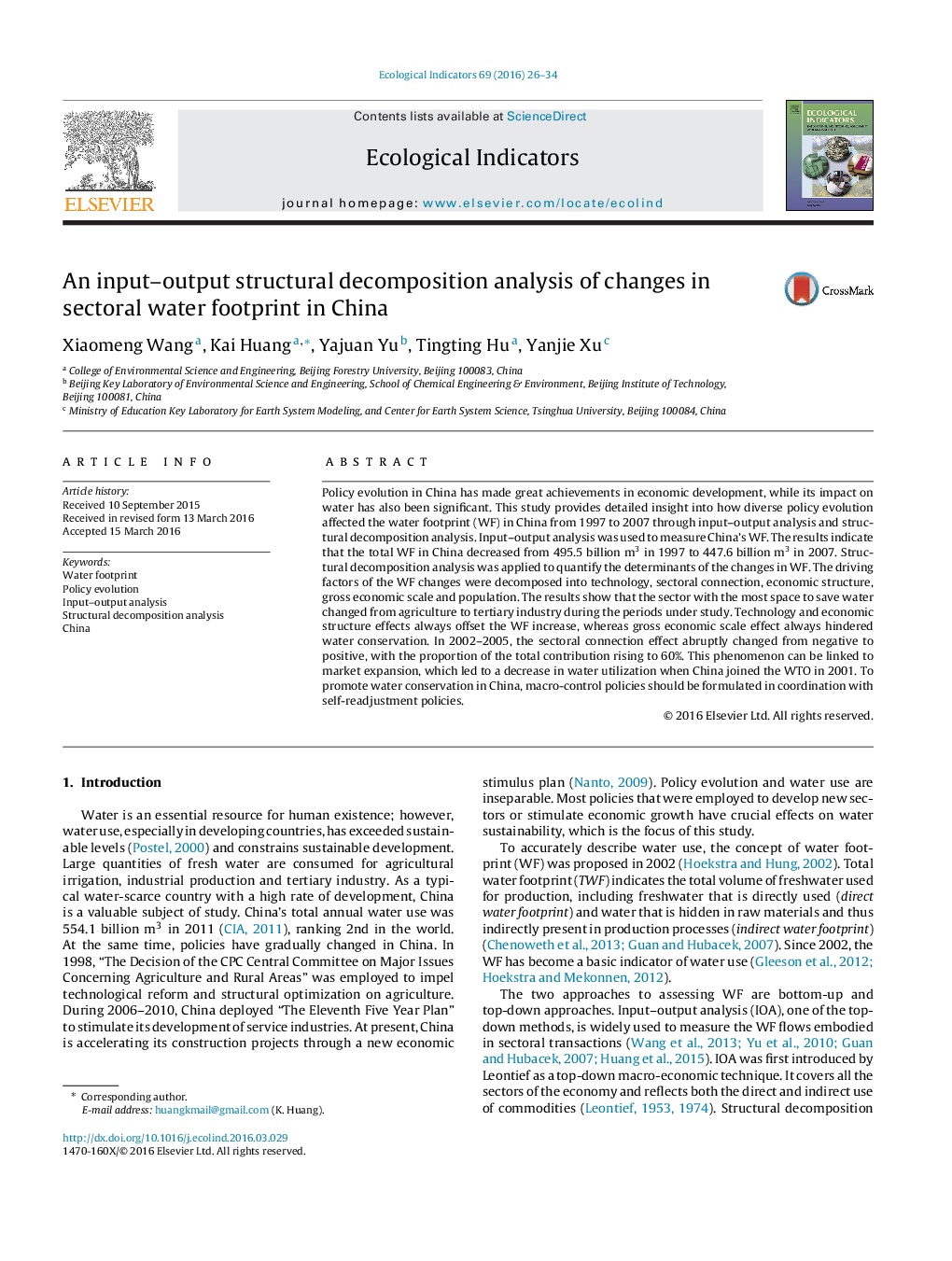| کد مقاله | کد نشریه | سال انتشار | مقاله انگلیسی | نسخه تمام متن |
|---|---|---|---|---|
| 6293189 | 1617133 | 2016 | 9 صفحه PDF | دانلود رایگان |
عنوان انگلیسی مقاله ISI
An input-output structural decomposition analysis of changes in sectoral water footprint in China
ترجمه فارسی عنوان
تجزیه و تحلیل تجزیه و تحلیل ساختاری ورودی-خروجی تغییرات در بخش های مختلف آب در چین
دانلود مقاله + سفارش ترجمه
دانلود مقاله ISI انگلیسی
رایگان برای ایرانیان
کلمات کلیدی
رد پای آب تکامل سیاست، تجزیه و تحلیل ورودی-خروجی، تجزیه تجزیه ساختاری، چین،
موضوعات مرتبط
علوم زیستی و بیوفناوری
علوم کشاورزی و بیولوژیک
بوم شناسی، تکامل، رفتار و سامانه شناسی
چکیده انگلیسی
Policy evolution in China has made great achievements in economic development, while its impact on water has also been significant. This study provides detailed insight into how diverse policy evolution affected the water footprint (WF) in China from 1997 to 2007 through input-output analysis and structural decomposition analysis. Input-output analysis was used to measure China's WF. The results indicate that the total WF in China decreased from 495.5 billion m3 in 1997 to 447.6 billion m3 in 2007. Structural decomposition analysis was applied to quantify the determinants of the changes in WF. The driving factors of the WF changes were decomposed into technology, sectoral connection, economic structure, gross economic scale and population. The results show that the sector with the most space to save water changed from agriculture to tertiary industry during the periods under study. Technology and economic structure effects always offset the WF increase, whereas gross economic scale effect always hindered water conservation. In 2002-2005, the sectoral connection effect abruptly changed from negative to positive, with the proportion of the total contribution rising to 60%. This phenomenon can be linked to market expansion, which led to a decrease in water utilization when China joined the WTO in 2001. To promote water conservation in China, macro-control policies should be formulated in coordination with self-readjustment policies.
ناشر
Database: Elsevier - ScienceDirect (ساینس دایرکت)
Journal: Ecological Indicators - Volume 69, October 2016, Pages 26-34
Journal: Ecological Indicators - Volume 69, October 2016, Pages 26-34
نویسندگان
Xiaomeng Wang, Kai Huang, Yajuan Yu, Tingting Hu, Yanjie Xu,
